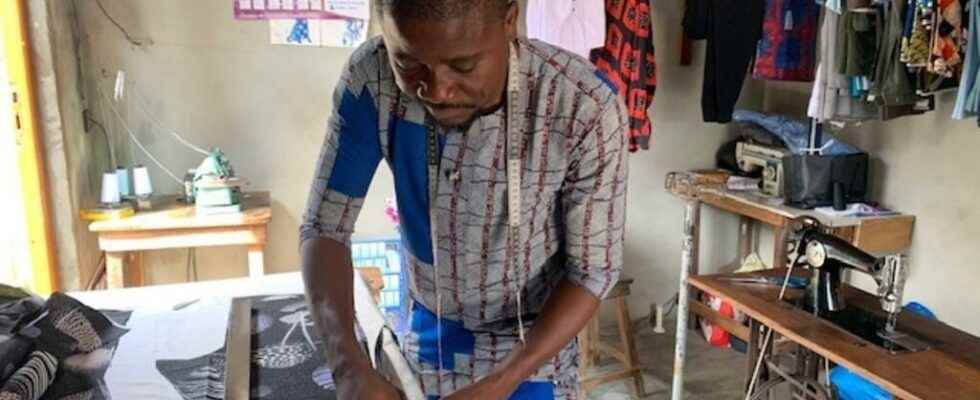New episode of our series dedicated to the clothes of the world. This time, direction Benin to discover the bomba. Sewn in the same piece of fabric, composed of a top and a bottom, it is worn by women as well as men, the old, the young, the children, on a daily basis or for ceremonies, whatever social rank. It is a traditional outfit but it evolves according to the fashions.
At the Houenoussou market in Cotonou, most traders wear the bomba: there is a loose blouse and a skirt, a loincloth rectangle attached to the waist. This is the traditional model. Nadège sells hair accessories and is about to leave by motorbike taxi.
” I’m a mom and I like to wear the bomba all week, because if I wear it I’m relaxed and I move everywhere. I’m comfortable in it. And if you grow in it, no one will know.
– How many do you have at home? ? – It’s uncountable, because I love bombas. »
This large version exists for men with trousers, but young people prefer the tight bomba, inspired by fitted jeans. This is the case of Judicaël Cakpo, 25, administrator of a cultural center in Porto Novo: ” The top is a short-sleeved tunic that is close to the body. And at the bottom, I wear pants that are tight at the calves and have a closure so that I can wear the pants and take them off afterwards. It’s custom sewn. We even modernize the bomba to be both in this Western trend without detaching ourselves from our values “.
A daily garment, the bomba is also ceremonial dress with sometimes imposed color or cut. It is mandatory for funerals. And for a few years, in the administrations, the big companies, it is accepted on Friday. Ifédé is director of human resources: “ From Monday to Thursday, I dress in a suit and tie for the various meetings in my usual function. But on Friday, I’m always in bomba. On Friday, we allow everyone to prepare for the atmosphere of the weekend “.
A garment from Nigeria
Each tailor must know how to sew the bomba, it is the base. In his workshop, Michel Akloe, 25 years in the business, responds to an order from a young client: ” In this fabric that the young man brought me, I will make two bombas. It will take me 4 hours of time, it’s very fast. You buy your loincloth, you bring it and you can make a complete garment. A simple bomba, no embroideries or patterns. It’s because it’s not expensive that the Beninese prefer to wear it every day “.
At Abass Bello, it costs a little more. This stylist is a specialist in traditional bombas in precious fabrics such as local woven loincloth, velvet or damask. He knows the origin well: This outfit comes from the Yoruba of Ilé Ifé in Nigeria. They brought it with them when they came to settle in Porto-Novo in Benin. Among the Yoruba, we say “boba” but in Porto-Novo the name has changed to “bomba” “.
If for some, the bomba becomes distorted by following fashion, for Abass Bello, it shows its vitality: “ No matter what shape it has, whether it’s loose or tight, whether it’s with long or short sleeves, with a zipper, it’s still the bomba, it’s something that comes from our culture. “.
The bomba is a sartorial heritage and it even has its own song. It’s a piece by Angélique Kidjo. The Beninese star wanted to talk about this emblematic garment: “ “Bomba ele souhai tô” means that this bomba was made by me. It’s the pride you take in doing your bomba, it defines you. I wrote this song because I saw my grandmothers, my aunts, my mother, all the women in my life wearing the bomba. It’s a garment that I will wear all the time “.
